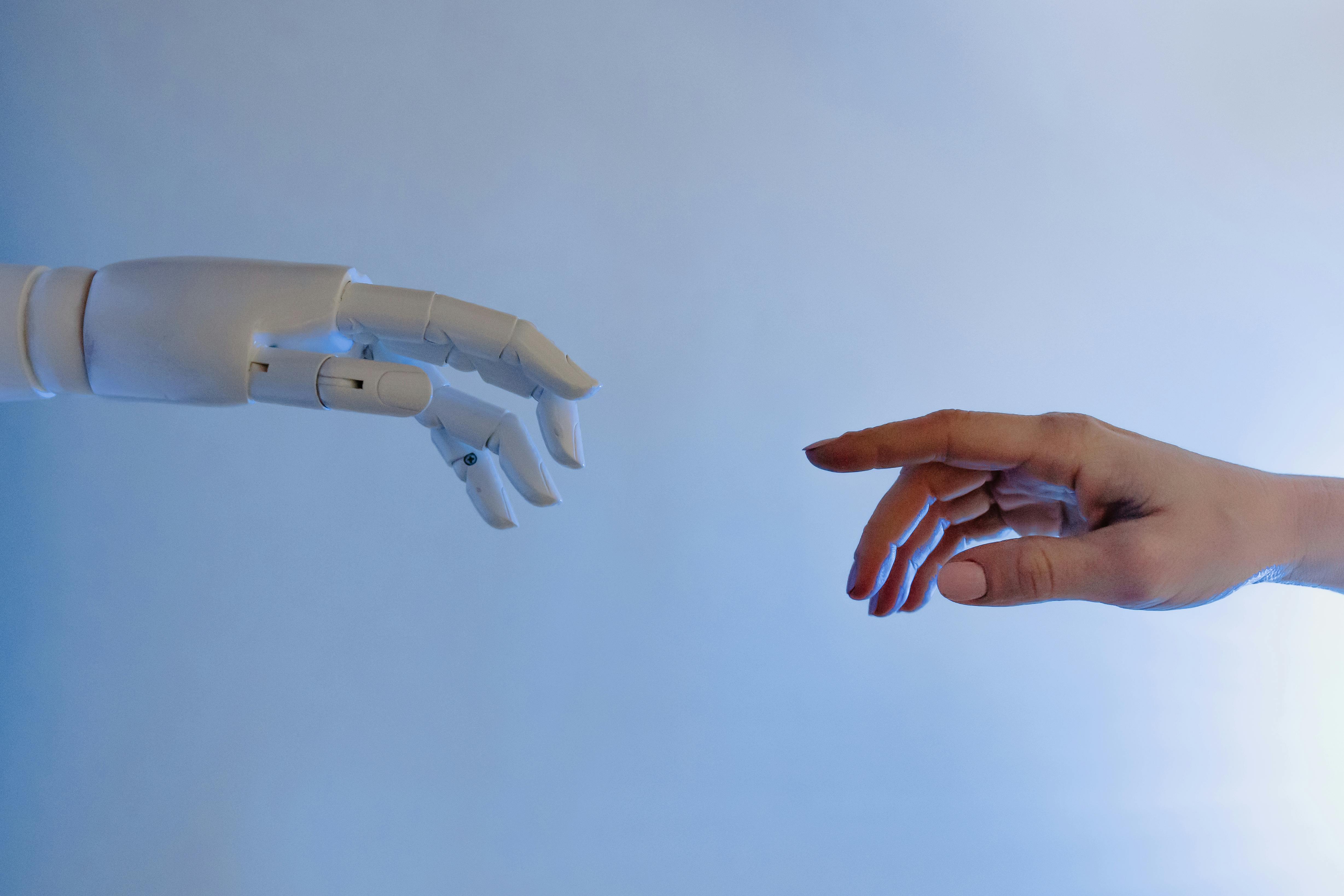
As artificial intelligence systems become increasingly sophisticated and autonomous, humanity faces a profound challenge: how do we ensure that our most powerful technological creations align with our deepest moral values? The development of AI ethics isn't just an academic exercise—it's an urgent necessity that will determine whether artificial intelligence becomes a force for human flourishing or a source of unprecedented harm. This moral compass we must construct will guide us through the most complex technological transformation in human history.
The Ethical Imperative: Why AI Ethics Matters Now
The urgency of AI ethics stems from the unprecedented scale and scope of artificial intelligence's impact on society. Unlike previous technologies that affected specific industries or aspects of life, AI is a general-purpose technology that touches virtually every domain of human activity. From healthcare decisions that affect life and death to criminal justice algorithms that determine freedom and incarceration, AI systems are increasingly making decisions that were once the exclusive domain of human judgment.
The ethical challenges posed by AI are fundamentally different from those we've faced before. Traditional ethical frameworks were developed for human agents with consciousness, intentionality, and moral responsibility. AI systems, however, operate through complex mathematical processes that can produce outcomes their creators never anticipated or intended. This creates a unique set of moral questions: How do we assign responsibility for AI decisions? What values should we embed in these systems? How do we ensure fairness when algorithms operate at scales and speeds that make human oversight impossible?
Moreover, the global nature of AI development means that ethical decisions made by technologists in one country can have profound impacts on people worldwide. The algorithms developed in Silicon Valley labs or Beijing research centers will shape the experiences of billions of people across different cultures, legal systems, and value frameworks. This global reach demands a new kind of ethical thinking that transcends traditional boundaries and considers the diversity of human values and experiences.
The Landscape of AI Ethical Challenges
Algorithmic Bias: The Mirror of Human Prejudices
One of the most pressing ethical concerns in AI is the problem of algorithmic bias—the tendency for AI systems to perpetuate or amplify existing social inequalities and prejudices. This bias isn't intentional malice on the part of developers; rather, it emerges from the data these systems learn from and the assumptions built into their design.
Historical data used to train AI systems often reflects past discrimination and inequality. When a hiring algorithm learns from decades of employment data that shows gender or racial disparities, it may learn to perpetuate these patterns, even if discrimination is explicitly prohibited. Similarly, facial recognition systems have shown significantly higher error rates for women and people of color, largely because they were trained on datasets that underrepresented these groups.
The challenge of bias is particularly insidious because it often operates invisibly. Unlike human discrimination, which can be observed and called out, algorithmic bias is hidden within complex mathematical processes that few people understand. This opacity means that biased systems can operate for years before their discriminatory effects are discovered and addressed.
Addressing algorithmic bias requires a multi-faceted approach. Technical solutions include careful curation of training data, algorithmic auditing tools, and fairness constraints built into machine learning models. However, technical fixes alone are insufficient. We also need diverse teams developing AI systems, inclusive design processes that consider different perspectives, and ongoing monitoring to detect bias in deployed systems.
Privacy and Surveillance: The Erosion of Personal Autonomy
AI systems have an insatiable appetite for data, and this hunger poses profound threats to privacy and personal autonomy. Modern AI applications can infer incredibly sensitive information from seemingly innocuous data. Location data can reveal medical conditions, purchasing patterns can predict political affiliations, and social media activity can be used to assess mental health or financial stability.
The scale of data collection enabled by AI far exceeds anything possible in the pre-digital era. Every click, search, purchase, and movement can be recorded, analyzed, and used to build detailed profiles of individuals. This comprehensive surveillance infrastructure, while enabling valuable services and insights, also creates unprecedented opportunities for abuse and control.
The challenge is complicated by the fact that much of this data collection happens invisibly and without meaningful consent. Users often have little understanding of what data is being collected, how it's being used, or what inferences are being drawn from it. Even when privacy policies exist, they're typically written in language that makes them difficult to understand and often give users little real choice about data collection.
Protecting privacy in the age of AI requires new frameworks for data governance. This includes stronger consent mechanisms that give users meaningful control over their data, purpose limitation principles that restrict how data can be used, and data minimization approaches that collect only the data necessary for specific functions. Some jurisdictions, like the European Union with its General Data Protection Regulation (GDPR), are pioneering new approaches to data protection, but global coordination is needed to address the transnational nature of AI systems.
Accountability and Responsibility: Who's to Blame When AI Goes Wrong?
As AI systems become more autonomous and complex, traditional notions of accountability and responsibility become increasingly problematic. When a self-driving car causes an accident, who is responsible—the manufacturer, the software developer, the owner, or the AI system itself? When an AI system makes a biased hiring decision, how do we assign blame and seek redress?
The challenge is compounded by the "black box" nature of many AI systems, particularly deep learning models. These systems can make decisions through processes so complex that even their creators cannot fully explain how specific outputs were generated. This opacity makes it difficult to determine whether problems result from flawed data, biased algorithms, or other factors.
Legal and regulatory frameworks are struggling to keep pace with these challenges. Traditional liability models assume human decision-makers who can be held accountable for their actions. AI systems, however, can make thousands of decisions per second, operating at scales and speeds that make human oversight impossible. This mismatch between technological capabilities and legal frameworks creates gaps in accountability that can leave victims of AI harms without recourse.
Addressing these accountability challenges requires new approaches to responsibility. This might include mandatory insurance for AI systems, algorithmic auditing requirements, or new forms of collective responsibility for the organizations that deploy AI systems. Some propose the creation of "algorithmic impact assessments" similar to environmental impact assessments, requiring organizations to evaluate and disclose the potential effects of their AI systems before deployment.
Competing Ethical Frameworks in AI Development
Utilitarian Approaches: Maximizing Overall Well-being
Utilitarian ethics, which focuses on maximizing overall happiness or well-being, offers one framework for AI ethics. From this perspective, AI systems should be designed to produce the greatest good for the greatest number of people. This approach has intuitive appeal—it suggests that we should weigh the benefits and harms of AI systems and optimize for positive outcomes.
Utilitarian thinking has influenced many AI applications. Recommendation algorithms aim to maximize user engagement and satisfaction. Traffic optimization systems seek to minimize travel times for all users. Medical AI systems are designed to improve health outcomes across populations. The utilitarian framework provides clear guidance for many AI design decisions and aligns with the data-driven optimization approaches common in machine learning.
However, utilitarian approaches also have significant limitations when applied to AI ethics. The framework can justify sacrificing individual rights or minority interests if doing so benefits the majority. It relies on the ability to measure and compare different types of benefits and harms, which can be difficult or impossible in practice. Moreover, utilitarian calculations can be manipulated based on how we define the relevant population or time horizon for consideration.
Deontological Perspectives: Rights and Duties
Deontological ethics, which focuses on rights, duties, and rules rather than consequences, offers an alternative framework for AI ethics. From this perspective, certain actions are inherently right or wrong regardless of their outcomes. This approach emphasizes respect for human dignity, autonomy, and rights that cannot be violated even for the greater good.
Deontological thinking underlies many proposals for AI regulation and governance. The idea that individuals have a right to explanation for algorithmic decisions affecting them reflects deontological concerns about human autonomy and dignity. Prohibitions on certain uses of AI, such as social credit systems or mass surveillance, are often based on deontological principles about the inherent wrongness of such applications.
However, deontological approaches can also be challenging to implement in AI systems. They often provide competing obligations that must be balanced against each other. They can be inflexible when faced with novel situations that weren't anticipated when the rules were created. Moreover, translating abstract rights and duties into specific algorithmic implementations can be extremely difficult.
Virtue Ethics: Character and Flourishing
Virtue ethics, which focuses on character traits and human flourishing, offers a third perspective on AI ethics. This approach asks not just what actions are right or wrong, but what kinds of technologies and systems promote human virtue and flourishing. It emphasizes the importance of wisdom, compassion, justice, and other virtues in both the development and deployment of AI systems.
Virtue ethics perspectives on AI often focus on the broader social and cultural impacts of these technologies. They ask whether AI systems promote or undermine human capacities for reasoning, creativity, and moral judgment. They consider how AI affects relationships, communities, and social institutions. They emphasize the importance of developing AI in ways that respect and enhance human agency rather than replacing or diminishing it.
This framework has influenced discussions about AI's impact on work, education, and social relationships. It supports approaches that use AI to augment human capabilities rather than replace them entirely. It emphasizes the importance of maintaining human skills and agency even as AI systems become more capable.
Cultural and Global Perspectives on AI Ethics
Western Liberal Democratic Values
Much of the current discourse on AI ethics has been shaped by Western liberal democratic values, emphasizing individual rights, privacy, autonomy, and transparency. This perspective prioritizes protecting individual freedom and dignity, limiting state and corporate power, and ensuring democratic accountability for AI systems.
Western approaches to AI ethics often emphasize procedural fairness—ensuring that AI systems follow consistent, transparent processes rather than producing specific outcomes. They focus on individual consent and choice, giving people control over their data and the AI systems that affect them. They emphasize the importance of explanation and accountability, ensuring that people can understand and challenge AI decisions.
However, these values are not universal, and imposing Western ethical frameworks globally can be a form of cultural imperialism. Different societies have different priorities, values, and approaches to balancing individual and collective interests. What seems obviously ethical from one cultural perspective may be problematic from another.
Asian Collectivist Approaches
Many Asian societies operate from more collectivist value systems that prioritize social harmony, collective welfare, and community solidarity over individual rights. From these perspectives, AI systems should be designed to strengthen social cohesion and collective flourishing rather than maximizing individual choice and autonomy.
These perspectives can support different approaches to AI governance and regulation. They might accept more extensive data collection and analysis if it serves collective goals like public health or safety. They might prioritize social stability and harmony over individual privacy or autonomy. They might embrace paternalistic AI systems that guide behavior toward collectively beneficial outcomes.
However, collectivist approaches also raise concerns about the suppression of dissent, the marginalization of minorities, and the concentration of power in authorities who determine collective interests. The challenge is finding ways to honor different cultural values while protecting fundamental human dignity and rights.
Indigenous and Traditional Perspectives
Indigenous and traditional cultures offer valuable perspectives on AI ethics that are often overlooked in mainstream discussions. These perspectives often emphasize relationships, reciprocity, and responsibility to future generations. They may prioritize ecological sustainability and harmony with natural systems over technological progress or economic efficiency.
Indigenous approaches to AI ethics might emphasize the importance of considering impacts on communities and ecosystems rather than just individuals. They might prioritize traditional knowledge and ways of life that could be threatened by AI systems. They might emphasize the importance of consent and sovereignty for communities, not just individuals.
These perspectives are particularly relevant as AI systems increasingly affect indigenous communities through applications like environmental monitoring, resource extraction, and cultural preservation. Ensuring that AI development respects indigenous rights and values requires meaningful consultation and collaboration with these communities.
Practical Frameworks for Ethical AI Development
Ethics by Design: Building Values into Systems
One of the most promising approaches to AI ethics is "ethics by design"—integrating ethical considerations into every stage of AI system development rather than treating ethics as an afterthought. This approach recognizes that the values and assumptions built into AI systems during their design and development phase have profound impacts on their eventual behavior and outcomes.
Ethics by design requires interdisciplinary teams that include not just technologists but also ethicists, social scientists, community representatives, and other stakeholders. It involves conducting ethical impact assessments before beginning AI projects, identifying potential harms and biases early in the development process, and building safeguards and constraints into the systems themselves.
This approach also emphasizes the importance of diverse perspectives in AI development. Teams with diverse backgrounds, experiences, and values are more likely to identify potential ethical issues and design systems that work well for different communities and use cases. This diversity should include not just demographic diversity but also intellectual and experiential diversity.
Algorithmic Auditing and Transparency
Algorithmic auditing—the systematic evaluation of AI systems for bias, fairness, and other ethical concerns—has emerged as a crucial tool for ensuring ethical AI deployment. These audits can take many forms, from technical analysis of model behavior to ethnographic studies of how AI systems affect different communities.
Effective algorithmic auditing requires both technical and social expertise. Technical audits might examine training data for bias, test model behavior across different demographic groups, or analyze the mathematical properties of fairness metrics. Social audits might involve community engagement, user studies, and analysis of real-world impacts.
Transparency is a key component of algorithmic auditing. This includes not just technical transparency—making algorithms and data available for inspection—but also procedural transparency about how decisions are made and outcome transparency about the effects of AI systems. However, transparency must be balanced against other values like privacy, security, and intellectual property protection.
Participatory Design and Community Engagement
Many ethical issues with AI systems stem from the fact that they are designed by technologists without meaningful input from the communities they will affect. Participatory design approaches seek to address this by involving affected communities in the design and development process from the beginning.
Participatory design can take many forms, from community advisory boards and user studies to co-design workshops and citizen science projects. The goal is to ensure that AI systems reflect the needs, values, and priorities of the people who will be affected by them rather than just the assumptions of their creators.
This approach is particularly important for AI systems that affect marginalized or vulnerable communities. These communities often have different priorities and concerns than the predominantly privileged groups that develop AI systems. Meaningful participation requires not just consultation but genuine power-sharing in design decisions.
Regulatory and Governance Approaches
Government Regulation and Oversight
Governments around the world are grappling with how to regulate AI systems to protect public interests while fostering innovation. This regulatory challenge is complicated by the global nature of AI development, the rapid pace of technological change, and the difficulty of regulating complex technical systems.
Different countries are taking different approaches to AI regulation. The European Union is developing comprehensive AI regulation that would classify AI systems by risk level and impose different requirements based on potential harms. China has implemented regulations focused on algorithmic recommendations and data protection. The United States has taken a more sector-specific approach, with different agencies developing regulations for AI in their domains.
Effective AI regulation requires balancing multiple objectives: protecting rights and preventing harms, fostering innovation and economic growth, maintaining competitiveness in global markets, and respecting democratic values and processes. This balance is difficult to achieve and may require new forms of adaptive regulation that can evolve with changing technology.
Industry Self-Regulation and Standards
The technology industry has developed various forms of self-regulation for AI ethics, including ethical guidelines, review boards, and industry standards. Major tech companies have created AI ethics teams, published ethical principles, and implemented internal review processes for AI projects.
Industry standards organizations are also developing technical standards for AI ethics, including metrics for fairness and bias, processes for ethical AI development, and guidelines for AI governance. These standards can provide practical guidance for organizations developing and deploying AI systems.
However, self-regulation has significant limitations. Companies may prioritize competitive advantage over ethical considerations. Voluntary guidelines lack enforcement mechanisms. Industry standards may reflect the interests of dominant players rather than broader public interests. Most experts agree that self-regulation alone is insufficient and must be complemented by government oversight and civil society engagement.
Multi-Stakeholder Governance
Given the complexity and global nature of AI ethics challenges, many experts advocate for multi-stakeholder governance approaches that bring together governments, industry, civil society, academia, and affected communities. These approaches recognize that no single actor has the expertise, legitimacy, or authority to govern AI alone.
Multi-stakeholder initiatives can take many forms, from international organizations and multi-sector partnerships to citizen panels and deliberative processes. The goal is to create governance mechanisms that are technically informed, democratically legitimate, and responsive to diverse stakeholder interests.
However, multi-stakeholder governance also faces challenges. Different stakeholders have different interests, values, and power levels. Consensus can be difficult to achieve. Implementation and enforcement can be challenging without clear authority structures. Despite these challenges, many believe that multi-stakeholder approaches offer the best hope for governing AI in ways that serve broader public interests.
Emerging Challenges and Future Considerations
Artificial General Intelligence and Superintelligence
While current AI ethics discussions focus primarily on narrow AI systems designed for specific tasks, the potential development of artificial general intelligence (AGI) and superintelligence raises even more profound ethical questions. AGI systems that match or exceed human cognitive abilities across all domains would require fundamentally different approaches to ethics and governance.
The development of AGI raises questions about the moral status of artificial entities. If AI systems develop consciousness, sentience, or other morally relevant properties, they might deserve moral consideration in their own right. This could require extending ethical frameworks to include artificial entities as moral patients rather than just tools.
Superintelligent AI systems could pose existential risks to humanity if their goals are not properly aligned with human values. This "alignment problem" represents perhaps the most challenging long-term issue in AI ethics. Ensuring that advanced AI systems remain beneficial and controllable as they become more capable is a crucial research priority.
Human Enhancement and Augmentation
AI technologies are increasingly being used not just to automate tasks but to enhance human capabilities. Brain-computer interfaces, AI-powered prosthetics, and cognitive enhancement tools raise questions about human identity, equality, and the goals of technological development.
These enhancement technologies could exacerbate existing inequalities if they are available only to wealthy individuals or nations. They could create new forms of discrimination between enhanced and unenhanced humans. They could raise questions about what it means to be human and whether there are limits to how much we should alter ourselves.
At the same time, enhancement technologies offer tremendous potential benefits, particularly for people with disabilities or limitations. They could help treat mental illness, enhance learning and memory, and extend human capabilities in beneficial ways. The challenge is ensuring that these technologies are developed and deployed in ways that promote human flourishing rather than creating new forms of inequality or alienation.
AI and Global Challenges
AI technologies will play crucial roles in addressing global challenges like climate change, poverty, disease, and conflict. However, the deployment of AI for these purposes also raises ethical questions about power, justice, and democracy.
Climate applications of AI, for example, could help optimize energy systems and reduce emissions, but they also require massive data collection and could concentrate power in the hands of technology companies or governments. AI systems for global health could improve medical care in underserved areas, but they might also perpetuate existing inequalities or impose Western medical models on different cultural contexts.
The use of AI for addressing global challenges requires careful attention to issues of justice, participation, and sovereignty. Solutions developed in wealthy countries may not be appropriate for different contexts. Local communities should have meaningful input into how AI systems are deployed in their areas. The benefits of AI should be distributed fairly rather than concentrated among those who already have advantages.
Building Ethical AI: A Collective Responsibility
The Role of Technologists
Software engineers, data scientists, and AI researchers have special responsibilities for ensuring ethical AI development. As the people who actually build these systems, they have unique power to shape their behavior and impacts. This requires not just technical expertise but also ethical sensitivity and social awareness.
Technologists need education and training in ethics, social science, and the broader impacts of technology. They need tools and frameworks for identifying and addressing ethical issues in their work. They need institutional support for raising ethical concerns and refusing to work on problematic projects.
Professional organizations for technologists are developing codes of ethics and professional standards that emphasize responsibility for the social impacts of technology. Some engineers are organizing for collective action on ethical issues, recognizing that individual action alone is insufficient to address systemic problems.
The Role of Organizations
Companies, research institutions, and other organizations that develop and deploy AI systems have crucial roles in ensuring ethical outcomes. This requires not just policy statements and ethics committees but fundamental changes to organizational culture, incentives, and practices.
Ethical AI requires diverse teams, inclusive design processes, and meaningful engagement with affected communities. It requires investment in research on fairness, safety, and other ethical issues. It requires transparency about AI systems and their impacts. It requires accountability mechanisms and responsiveness to ethical concerns.
Organizations also need to consider the broader social and economic impacts of their AI systems. This includes effects on employment, inequality, and social cohesion. It includes consideration of how AI systems affect different communities and whether benefits are distributed fairly.
The Role of Society
Ultimately, ensuring ethical AI is a collective social responsibility that requires participation from all members of society. Citizens need to be informed about AI technologies and their impacts. They need opportunities to participate in discussions about how these technologies should be developed and deployed.
Civil society organizations play crucial roles in advocating for affected communities, conducting research on AI impacts, and holding companies and governments accountable. Academic institutions contribute through research, education, and public engagement. Media organizations help inform public understanding and debate.
Democratic institutions need to evolve to address the challenges of governing AI. This may require new forms of public participation, updated regulatory frameworks, and international cooperation mechanisms. It requires balancing expertise and democratic legitimacy in complex technical decisions.
Conclusion: Navigating the Moral Landscape of AI
The ethical challenges posed by artificial intelligence are among the most complex and consequential issues facing humanity today. They require us to grapple with fundamental questions about values, responsibility, and the kind of future we want to create. They demand new forms of collaboration across disciplines, sectors, and cultures.
The stakes could not be higher. The decisions we make about AI ethics today will shape the trajectory of this transformative technology for decades to come. They will determine whether AI becomes a force for human flourishing or a source of new forms of inequality, oppression, and harm.
There are no easy answers to these challenges. Different ethical frameworks point in different directions. Cultural values conflict. Technical solutions have limitations. Regulatory approaches face trade-offs between competing objectives. The complexity of AI systems makes it difficult to predict or control their impacts.
Yet this complexity should not paralyze us. The perfect ethical framework may not exist, but better and worse approaches certainly do. Progress is possible through careful analysis, inclusive dialogue, experimental implementation, and adaptive learning from experience.
The path forward requires humility about what we don't know, openness to different perspectives and values, and commitment to ongoing dialogue and adjustment. It requires recognition that AI ethics is not a problem to be solved once and for all but an ongoing process of navigation through complex moral terrain.
Most importantly, it requires recognition that the future of AI is not predetermined by technological forces but will be shaped by the choices we make as individuals, organizations, and societies. We have the opportunity—and responsibility—to ensure that artificial intelligence serves human values and promotes human flourishing.
The moral compass we construct for artificial intelligence must be robust enough to guide us through unknown territories, flexible enough to adapt to changing circumstances, and inclusive enough to reflect the diversity of human values and experiences. It must help us harness the tremendous potential of AI while avoiding its greatest risks.
This is perhaps the most important task of our time: ensuring that as we create artificial minds, we do not lose our moral souls. The future of AI—and humanity—depends on getting this right.



